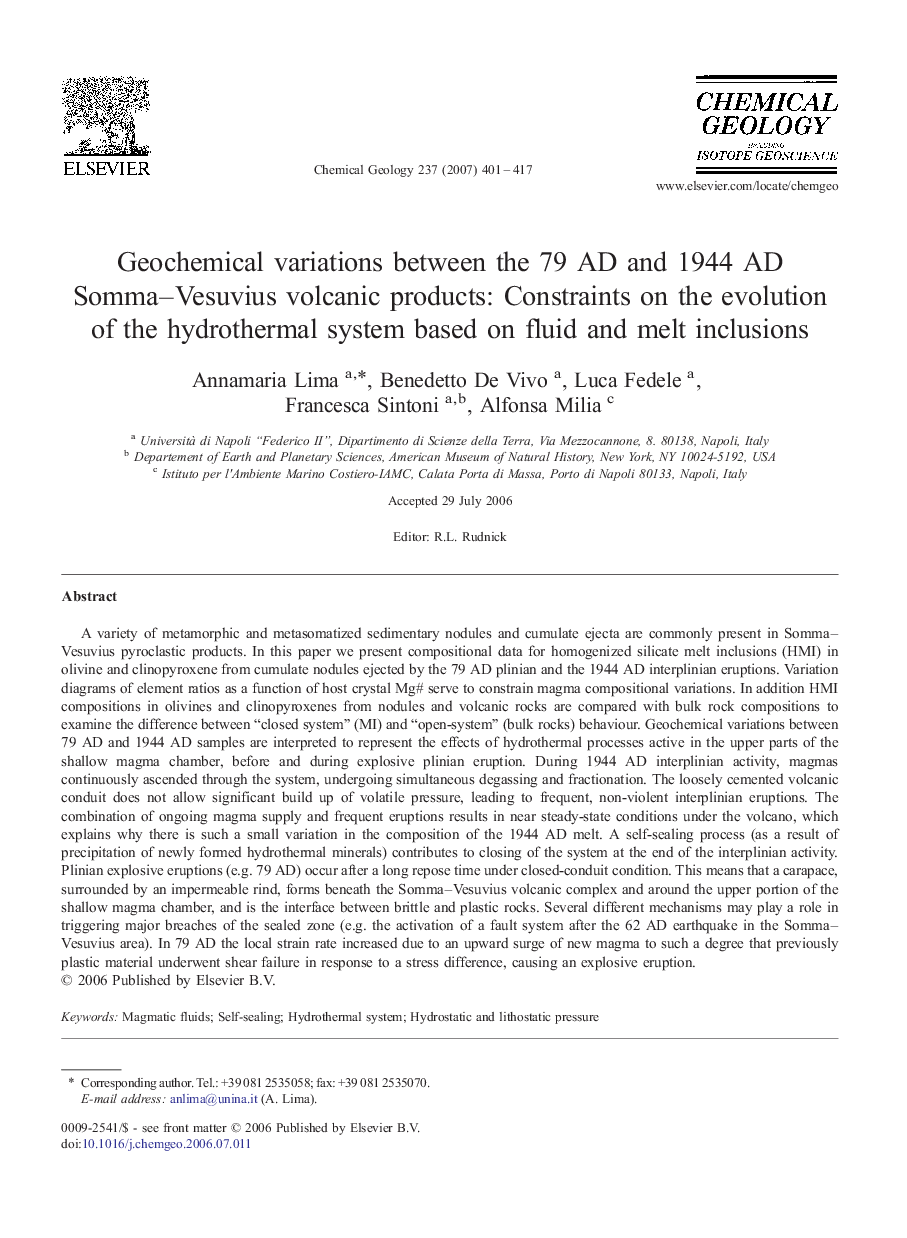| Article ID | Journal | Published Year | Pages | File Type |
|---|---|---|---|---|
| 4701128 | Chemical Geology | 2007 | 17 Pages |
Abstract
A variety of metamorphic and metasomatized sedimentary nodules and cumulate ejecta are commonly present in Somma-Vesuvius pyroclastic products. In this paper we present compositional data for homogenized silicate melt inclusions (HMI) in olivine and clinopyroxene from cumulate nodules ejected by the 79 AD plinian and the 1944 AD interplinian eruptions. Variation diagrams of element ratios as a function of host crystal Mg# serve to constrain magma compositional variations. In addition HMI compositions in olivines and clinopyroxenes from nodules and volcanic rocks are compared with bulk rock compositions to examine the difference between “closed system” (MI) and “open-system” (bulk rocks) behaviour. Geochemical variations between 79 AD and 1944 AD samples are interpreted to represent the effects of hydrothermal processes active in the upper parts of the shallow magma chamber, before and during explosive plinian eruption. During 1944 AD interplinian activity, magmas continuously ascended through the system, undergoing simultaneous degassing and fractionation. The loosely cemented volcanic conduit does not allow significant build up of volatile pressure, leading to frequent, non-violent interplinian eruptions. The combination of ongoing magma supply and frequent eruptions results in near steady-state conditions under the volcano, which explains why there is such a small variation in the composition of the 1944 AD melt. A self-sealing process (as a result of precipitation of newly formed hydrothermal minerals) contributes to closing of the system at the end of the interplinian activity. Plinian explosive eruptions (e.g. 79 AD) occur after a long repose time under closed-conduit condition. This means that a carapace, surrounded by an impermeable rind, forms beneath the Somma-Vesuvius volcanic complex and around the upper portion of the shallow magma chamber, and is the interface between brittle and plastic rocks. Several different mechanisms may play a role in triggering major breaches of the sealed zone (e.g. the activation of a fault system after the 62 AD earthquake in the Somma-Vesuvius area). In 79 AD the local strain rate increased due to an upward surge of new magma to such a degree that previously plastic material underwent shear failure in response to a stress difference, causing an explosive eruption.
Related Topics
Physical Sciences and Engineering
Earth and Planetary Sciences
Geochemistry and Petrology
Authors
Annamaria Lima, Benedetto De Vivo, Luca Fedele, Francesca Sintoni, Alfonsa Milia,
